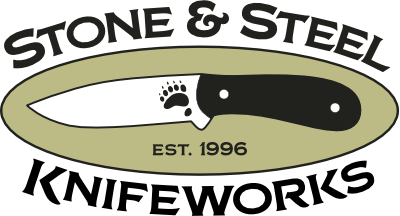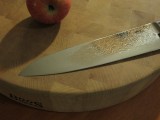Short answer would be wood.
The best way to maintain the sharpness of a knife is to make sure that the only things that come in contact with the edge are softer than the knife’s edge.
Subsequently, the best cutting board for your knife is one that is softer than the steel in the knife’s blade.
The old standard of wood still works best. There has been some talk of concerns about wooden cutting boards harboring bacteria, but much of that has been dispelled and a small amount of research on the internet can yield the facts.
If you still feel uncomfortable using wood, especially for meat, use a high density polyethylene or nylon cutting board for the meat and use wood for everything else. The synthetic cutting board can be sprayed with bleach after use to kill any bacteria, and the softer plastic will not damage your knife’s edge. Some of the more modern high density pressboard material is still softer than most knife edges. Any glass or tile should be avoided for use as a cutting board.
When cutting on a cutting board, try to avoid chopping motions or any technique that involves striking the edge of the knife directly against the cutting board. If you have something that needs to be chopped, try a rocking motion by placing the tip of the knife on the cutting board and then raising and lowering the handle of the knife as you move the blade from side to side over the items you want to chop. To keep the tip down on the board, place two fingers or the palm of your left hand (if you are right handed) on the spine of the blade, near the tip and press firmly down as you rock the blade up and down by raising and lowering the handle with your right hand.

